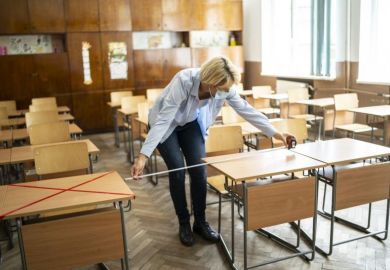As we approach the shortest day of the year in the northern hemisphere, the summer now feels like a long time ago. But while the salubrious effects of the sunshine on my vitamin D levels may have long since run out, I am still benefitting from all the thought I put into my teaching back then. And I’m still wondering why it took a pandemic to jolt me into embracing such good practice.
To be fair, it was a summer like no other. At a time when a lot of my friends were trying to fill the unexpected “leisure” time they suddenly had thrust upon them while on furlough, the war cry for academics was: “Drop everything and redesign your teaching in the next four weeks”. So much for the papers that I had planned to finish. So long to the sabbatical.
But at least my university mandated dual delivery from the beginning, so I knew I wouldn’t be derailed by any subsequent lockdowns. And as I started reflecting on how to deliver content both remotely and in person, I started to see the opportunities.
The first was to revisit our core learning objectives. Over the years, I had become very comfortable with my taught content and I hadn’t made the time to shake it up. Each year, I had written notes for myself on how to improve this lecture, or update that one. As a result, the lectures slowly evolved but, potentially, they moved away from the original points. My desire to include the most up-to-date research had resulted in some of my lectures feeling a bit disjointed and out of sequence.
So, this summer, I reassessed my learning objectives, refined them and evaluated the taught content against them. This has resulted in a better learning experience and outcomes for students, while retaining the cutting-edge recent research.
I also took time to try out some of the technology on offer. Even my most tech-savvy colleagues are finding it a struggle to keep up with all the new apps available to “make teaching better”. It is a steep learning curve and the fear was always that the digital native students would look down on me when I struggled to share my screen or if the video I was playing ate all the bandwidth.
But the truth is that the students were also mostly at sea. They hadn’t used online polls before and I might as well have been speaking a different language when I mentioned collaborative spreadsheets. So I found that I needed to give both myself and my students the time to become familiar with new software.
My school created a space to try out new software with colleagues, find out what worked and what didn’t, which was invaluable. At one point, we spent the best part of a week trying to work out how to activate live captioning for students with hearing impairments. It turned out to be pretty simple once you knew how, but certainly not intuitive.
I have also found that being honest with students goes a long way. When I am trying something new, I tell them. I apologise for mistakes and explain that, like them, I am learning to deal with the new procedures. I have found the majority of students are very understanding and comforted to know that we are in the same boat.
As well as course content and delivery platform, I also reflected on my teaching interactions. People have been talking about flipped learning for years, but I never had the guts to try it out properly in the lecture theatre. With dual delivery and blended learning now compulsory, I have begun making short video tutorials. The idea is that they are more than pre-recorded lectures: I edit them so that they can provide references for any students who want to use certain concepts, bits of equipment or specialist software. It was actually quite fun recording step-by-step guides for fieldwork, and I am becoming a wiz at movie editing and voiceovers.
The result is that the students do indeed come to practical and/or face-to-face sessions having already informed themselves sufficiently to identify where they need further explanation and support, allowing them to ask more technical and insightful questions during the limited time we have together. And if they can’t attend the face-to-face sessions, they still have a practical reference, building in resilience and provision for students who are unable to attend synchronous events.
An approach that one of my colleagues is taking involves pre-recording the lecture and using the timetable slot for discussion. He has found that he can easily fill an hour answering questions. Another colleague sees the timetabled slots as being like her own talk show, meshing pre-recorded snippets, discussions and polls.
There has been a lot of talk about how the pandemic has forced on universities a level and speed of innovation that was never previously thought possible. But the same has been true for individuals’ teaching practice. And while it has been an enormous challenge, it has also been refreshing.
As we go back to in-person teaching, there may well be elements of our digital innovation that we retain. But the most important lesson of the pandemic for me has been that regular reflection on teaching practice, where time allows, is a very valuable exercise.
Jessica Johnson is associate professor in geophysics in the School of Environmental Sciences at the University of East Anglia.
Register to continue
Why register?
- Registration is free and only takes a moment
- Once registered, you can read 3 articles a month
- Sign up for our newsletter
Subscribe
Or subscribe for unlimited access to:
- Unlimited access to news, views, insights & reviews
- Digital editions
- Digital access to THE’s university and college rankings analysis
Already registered or a current subscriber?









